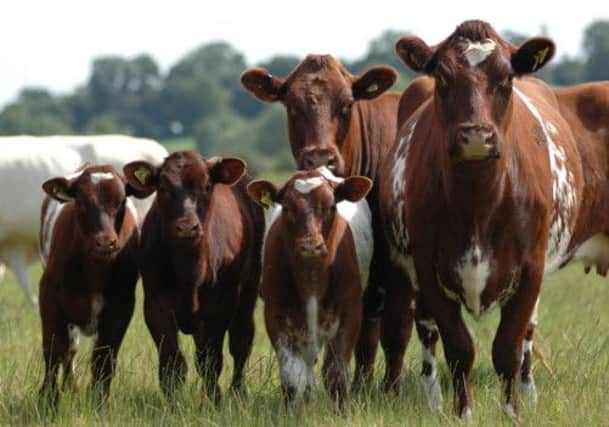Farming: Mineral key to calf bone deficiency problem


Researchers at the SAC have linked low blood levels of manganese in cows with cases of long bone deformity in new-born calves.
The problem, technically known as chondrodystrophy and sometimes also known as dwarf calf syndrome, is caused by a lack of growth in the long bones such as those in the leg.
Advertisement
Hide AdAdvertisement
Hide Ad“Calves suffering from the complaint are born small due to this shortening, giving them a characteristically short, often bow-legged appearance,” said the college’s beef specialist, Dr Basil Lowman.
“In addition, they may have dished faces and domed heads. In some cases, deformities can be so bad that the calves cannot stand to suckle and have to be put down.”
According to Lowman, where long bone deformity occurred, it was not only a welfare issue but had a major financial cost – as well as being depressing for farmers to deal with at calving.
He said the ailment had been seen in the north of the UK over the past 20 years – and scientists and vets had been trying to pin down the cause.
However, SAC Consulting has revealed that the complaint appears to be linked to an unusual form of manganese deficiency at a critical stage in the cow’s pregnancy and, as a result, the organisation is doubling its recommendations for daily intakes of this mineral.
Manganese is different from the more commonly supplemented magnesium, which is associated with staggers. “The complaint is often seen where winter rations for pregnant cows consist almost entirely of silage. Researchers found that the fourth to fifth months of pregnancy, when a calf’s bones and joints are developing rapidly, appear to be the most critical.”
He said that the symptoms were generally associated with high-quality pit silage but could also occur with big bale silage and had been particularly prevalent in cows fed red clover silage, and as such had been an increasing problem for organic producers.
Lowman said that although researchers had not pinned down the actual mechanism of the disease, there appeared to be a strong link with manganese deficiency.
Advertisement
Hide AdAdvertisement
Hide AdThe trials suggested that although silage usually had high levels of manganese, something produced during the fermentation process appeared to be binding with the mineral, making it unavailable for the cow to digest.
“A common recommendation would be to restrict silage to no more than 75 per cent of the cows’ total dry matter intake,” said Lowman. “For dry, pregnant beef cows needing a relatively low energy intake it is usual to use straw to balance the silage ration. However, this can be a problem on the west side of the country, where many stock farms don’t grow grain and buying it in can be expensive.”
He added that the college had upped its total intake target to 1000mg of manganese per cow per day: “Where there is a perceived problem I would suggest farmers use a mineral supplement containing around 7,000 mg per kilogramme.”